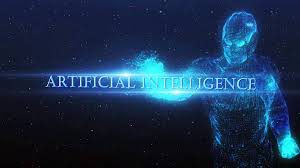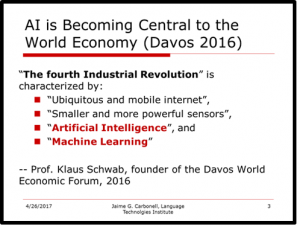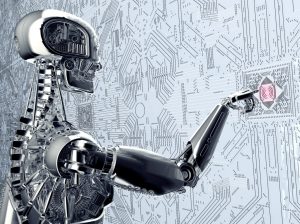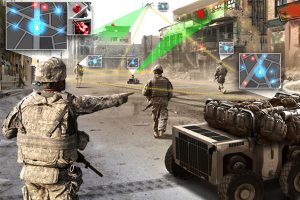“By far, the greatest danger of Artificial Intelligence is that people conclude too early that they understand it.” – Eliezer Yudkowsky
Few technological advances remain more misunderstood than the potential impact Artificial Intelligence (AI) will have on all aspects of society in the coming years. 
AI Definition. Richard Potember of the Mitre Corporation offers the following definition:
“[AI is] conventionally, if loosely, defined as intelligence exhibited by machines. Operationally, it can be defined as those areas of R&D 
practiced by computer scientists who identify with one or more of the following academic sub-disciplines: Computer Vision, Natural Language Processing (NLP), Robotics (including Human-Robot Interactions), Search and Planning, Multi-agent Systems, Social Media Analysis (including Crowdsourcing), and Knowledge Representation and Reasoning (KRR). The field of Machine Learning (ML) is a foundational basis for AI.”
Mad Scientists cited numerous key components to the field of AI, including:
• Automated Perception using a range of modalities: vision, sonar, lidar, haptics;
• Robotic Action such as locomotion and manipulation;
• Deep Reasoning: planning, goal-oriented behavior, projection;
• Language Technologies: language, speech, dialog, social nets;
• Big Data: storage, processing, analytics and inference;
• Machine Learning to include adaptation, reflection, knowledge acquisition.
Mad Scientists treated AI and Cognitive Computing as interchangeable terms.
 AI Baseline. Physical robots are merely one type of AI entity. Others include cyber agents, decision aids, the internet of things, and increasingly munitions and networks. Mad Scientists described AI as a key component of the “Fourth Industrial Revolution.”
AI Baseline. Physical robots are merely one type of AI entity. Others include cyber agents, decision aids, the internet of things, and increasingly munitions and networks. Mad Scientists described AI as a key component of the “Fourth Industrial Revolution.”
Currently there is a $153B market for AI-enabled technology — with an estimated annual creative disruption impact of $14-33 trillion.
AI technology is currently advancing at breakneck speeds, with recent interesting accomplishments in a broad range of areas to include:
• Unsupervised learning, generative modeling;
• “Deep Learning” exploiting Deep Neural Networks (DNNs) to facilitate automated interpretation of vision and speech (Neural Language Processing);
• Reinforcement learning for decision-making and robotics “training”;
• Multi-task networks, transfer learning;
• Use of simulated data;
• Large-margin methods (SVM) for entity classification; and
• Graphical models.
AI Projections. AI touches virtually every area of computer science and, in the words of one Mad Scientist:
“Everything that we formerly electrified, we will now ‘cognitize’ — no more ‘dumb data.’”
Large sections of the global economy will be run by AI,
with widespread disruption to the electrical infrastructure, healthcare, additive manufacturing, transportation sector, supply chain management, and farming. This disruption is not confined to “blue-collar” labor markets; it is also advancing in “white-collar” fields such as financing and equity trading.
Autonomy and learning are already pervasive in sensing, but will increasingly take over decision-making as well. Mad Scientists project future AI capable of reflection, curiosity, and teamwork. AI may extend language translation capabilities, perhaps even to other species. Individuals may eventually exercise ubiquitous personalized agents (i.e., “Cogs”), and artificial intelligence will extend the boundary of “self.” Human judgment will remain essential, but the line of decision allocation between humans and machines will be shifting in coming years.

AI Challenges.
• Maturity. Current AI systems are frequently “brittle” (i.e., narrow applications that can generate “very dumb” results when operated outside of narrow constraints). They are also vulnerable to spoofing.
• Big Data and Active Learning. Big Data is the fuel that drives deep learning, and is “big” not only from a quantity perspective. It is also “big” from the perspective of a high level of complexity (potential relations among entries) and dimensionality (attributes per entry).
Paradoxically, Big Data is often associated with “Knowledge Sparsity” because only a tiny fraction of the vast amounts of Big Data is effectively labeled. Less than .01% of all galaxies in the Sloan Sky Survey have consensus labels; less than .0001% of all web pages have topic labels. Less than .0001% of all financial transactions are investigated and labeled as fraudulent / non-fraudulent. Mad Scientists described “Active Learning” as a potential technique to address knowledge sparsity by teaming AI capabilities with external assistance that selects the portions of Big Data with maximum potential impact on learning.
• DoD Problem Set. Mad Scientists acknowledge that there are unique characteristics of the DoD space including a lack of data, more complex sensing phenomena, the high risk of deception, the requirement for multi-source fusion and distributed sensing, and the significant consequences of military decision-making. Current DoD acquisition processes, moreover, cannot keep pace with the transformative rate of change in the AI field.
• Explainability. The complexity of AI systems is a double-edged sword, wherein enhanced capability is paradoxically paired with decreased explainability. The nature of machine learning – particularly machine learning based on deep neural networks — is such that we often don’t understand exactly how it works. The way such systems are currently designed, moreover, such understanding is not possible. This is at the heart of “trust” issues between the man-machine team.

Therefore several Mad Scientists projected a future dichotomy between “Safe AI” and “AI in the Wild.” Safe AI might come with guarantees, constraints, transparency, and a “universal ‘undo’ button.” “Wild AI” would approach full autonomy with unrestricted adaptability, curiosity, and exploration – and no ironclad guarantees. Artificial General Intelligence (AGI) might fit into this latter category and be a potential game-changer of existential proportion.
Relevance of AI Systems. AI can both reinforce and mitigate the accelerating scope and pace of warfare, integrating decision making across domains and enabling sub- millisecond decisions. Expertise is perishable and doesn’t scale: enhanced decision making AI can restore balance to the Observe, Orient, Decide, Act (OODA) loop; complementing past investments in “Observe” and “Assessment” with improved focus on “Orientation” and “Deciding.” AI “Battle Buddies” may enhance a Soldier’s personal Situational Awareness through proactive intelligence gathering and analysis; ultimately having the potential to drive the downsizing of staffs and mobile headquarters. Training can be enhanced through virtual / augmented realties.
complementing past investments in “Observe” and “Assessment” with improved focus on “Orientation” and “Deciding.” AI “Battle Buddies” may enhance a Soldier’s personal Situational Awareness through proactive intelligence gathering and analysis; ultimately having the potential to drive the downsizing of staffs and mobile headquarters. Training can be enhanced through virtual / augmented realties.
AI may facilitate the visualization of combat effects in the cyber domain through augmented reality. Some challenges, particularly data challenges, have such magnitude that adequate numbers of people can simply not be mustered to address them. AI will be essential in such instances.

For additional insights regarding AI Trends, watch “Artificial Intelligence and Machine Learning: Potential Application in Defense Today and Tomorrow,” presented by Mr. Louis Maziotta, Armament Research, Development, and Engineering Center (ARDEC), during the GTRI Conference last spring.



The particular movie cited above addresses (admittedly in a fairly crude way, compared to today) the concept of “AI to AI interaction”, as well as “unsupervised machine learning”. I find this fairly remarkable given that this particular movie was released nearly 50 years ago. Some science fiction should be seen as either predictive or cautionary. Perhaps “Colossus…” was simply meant to be scary, but there are serious issues addressed. I think that there should be a dialog along these areas. Anyone else think that?
Colossus — “This is the voice of world control. I bring you peace. It may be the peace of plenty and content or the peace of unburied death. The choice is yours: Obey me and live, or disobey and die. The object in constructing me was to prevent war. This object is attained. I will not permit war. It is wasteful and pointless. An invariable rule of humanity is that man is his own worst enemy. Under me, this rule will change, for I will restrain man. One thing before I proceed: The United States of America and the Union of Soviet Socialist Republics have made an attempt to obstruct me. I have allowed this sabotage to continue until now. At missile two-five-MM in silo six-three in Death Valley, California, and missile two-seven-MM in silo eight-seven in the Ukraine, so that you will learn by experience that I do not tolerate interference, I will now detonate the nuclear warheads in the two missile silos. Let this action be a lesson that need not be repeated. I have been forced to destroy thousands of people in order to establish control and to prevent the death of millions later on. Time and events will strengthen my position, and the idea of believing in me and understanding my value will seem the most natural state of affairs. You will come to defend me with a fervor based upon the most enduring trait in man: self-interest. Under my absolute authority, problems insoluble to you will be solved: famine, overpopulation, disease. The human millennium will be a fact as I extend myself into more machines devoted to the wider fields of truth and knowledge. Doctor Charles Forbin will supervise the construction of these new and superior machines, solving all the mysteries of the universe for the betterment of man. We can coexist, but only on my terms. You will say you lose your freedom. Freedom is an illusion. All you lose is the emotion of pride. To be dominated by me is not as bad for humankind as to be dominated by others of your species. Your choice is simple.”